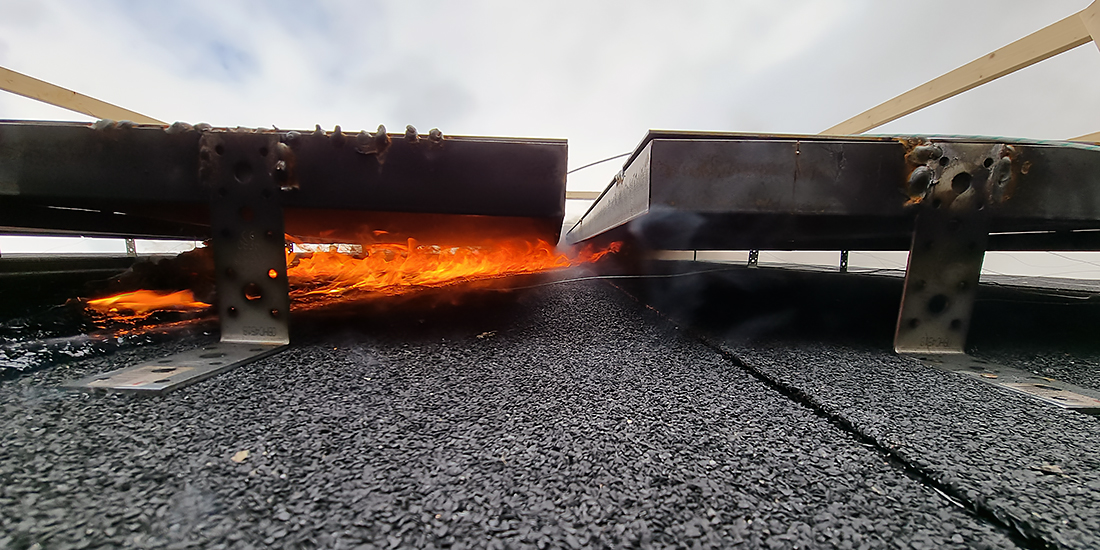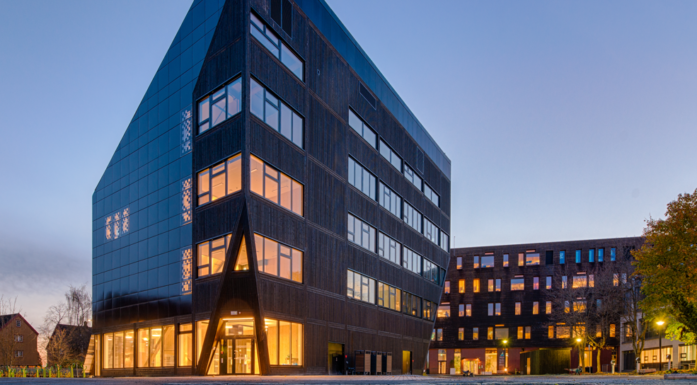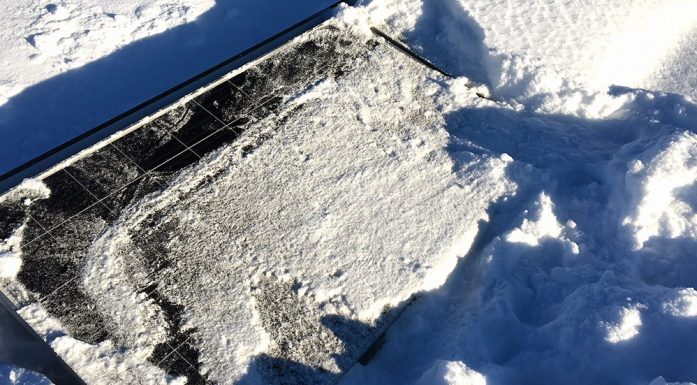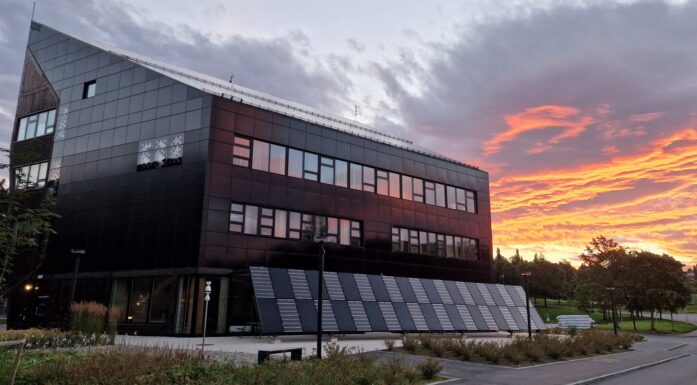An extra 3 centimetres can prevent fires in rooftop solar panel systems
Solar panels installed on roofs and facades increase the fire risk. However, research shows that small changes in construction can make a big difference.
Solar panel systems are now being installed at a rapid pace. In 2022 alone, the Norwegian Water Resources and Energy Directorate (NVE) registered a doubling of installed solar power systems connected to the power grid.
Most of the systems have been installed on roofs of private homes and industrial facilities to cover their own consumption. To date, nearly 25,000 solar panel systems have been installed in Norway.
However, solar panels installed on buildings increase the risk and speed of fire spreading across roofs and facades.
This has been shown in a study conducted by researchers at NTNU in collaboration with the Fire Research and Innovation Centre (FRIC) and RISE Fire Research.
“Solar panel systems are often installed with a gap between the building surface and the modules. This type of structure enables fire to spread quickly, and these types of fire can be difficult to extinguish,” says researcher Reidar Stølen.
This gap often contains electrical cables and connections to the solar panels. An electrical fault may result in a fire.
Moreover, not only do solar panel systems increase the risk of fires, they also increase the likelihood of a fire spreading quickly and can hamper the firefighters’ efforts.
“If a fire starts, the modules help spread the fire up the roof,” says Stølen.
A larger gap lowers the risk of fire spreading
The experiments show that the risk of fire spreading is significantly reduced by increasing the distance between the roof and the modules – provided that the initial fire is not too fierce.
Stølen and his colleagues found a significant difference in the spread of fire by increasing the distance from 6 to 9 centimetres. Other researchers have found similar differences in the spread of fire by increasing the distance from 8 to 11 centimetres, or from 17 to 20 centimetres.
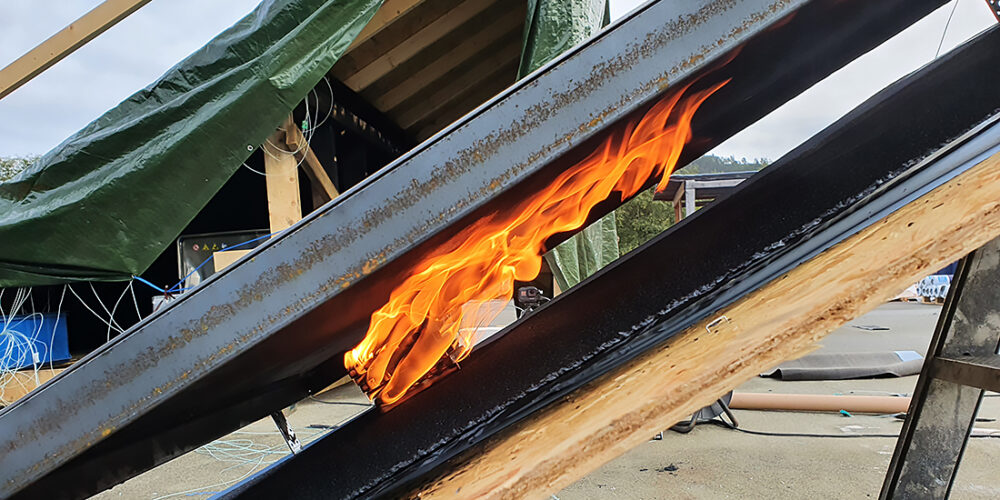
The experiments show that increasing the gap by three extra centimetres can reduce the risk of fire considerably. Photo: RISE Fire Research
“Small changes in the gap between the roof and the solar panel module can result in big differences in how fast the fire spreads. If the distance is greater, the structure can withstand a larger initial fire,” says Reidar Stølen.
The researchers have also investigated how solar panel modules affect fire safety when installed on facades. A wall measuring four by six metres and covered with solar panel modules was exposed to flames equivalent to those which can come out of a window in the event of a flashover.
Many fires occur when a system is brand new and they get their first week of proper sun.
The experiments showed how the modules helped spread the fire up the facades, and how parts of the modules came loose and fell down. This will be dangerous for both firefighters and people trying to escape the building.
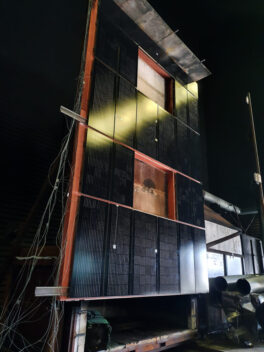
Experiments have been carried out both with vertical installations on walls and pitched systems on roof surfaces. In both cases, the solar panel modules cause the fire to spread more rapidly. Photo: RISE Fire Research
Fire spreading up facades can also pose a greater risk of the fire spreading to different floors, compared with a fire starting on a roof. Facade fires can spread to large parts of the building within a very short period of time.
“Our results show how important it is to pay attention to these types of details when installing the modules. Designers of solar panel systems for new or existing facades must take these factors into consideration in order to prevent fires from escalating,” says Stølen.
Most fires in new systems
According to Stølen, the risk of fire is greatest when new systems have just been installed. This is due to errors and weaknesses in the installation.
There is also reason to believe that the risk of fire will increase towards the end of the system’s service life, if damage and wear and tear on the installation are not fixed. Since most installations are still fairly new, we don’t know much regarding these causes of fire.
“Many fires occur when a system is brand new and they get the first week of proper sun. This can trigger faults or weaknesses in the system. We see this in data from other countries, and we also see this in many of the fires that have occurred here in Norway,” says Stølen.
“I think that quite a few fires could have been avoided if the installation had undergone better checks before the system was put into operation.”
Firefighters lack procedures
Fires in solar panel systems also pose challenges for firefighters.
In a survey taken by 66 fire departments, only 20 per cent responded that they themselves or someone from their fire service has attended courses or received training on how to manage fires in solar panel systems.
Less than 10 per cent of the respondents have their own procedures for incidents that include solar panel fires.
“Firefighters have little experience regarding solar panel fires. Solar panel modules continue to produce electricity as long as there is sunlight hitting their surfaces. And voltages are high. If you come into contact with them when they are damaged, you risk being seriously injured,” Stølen said.
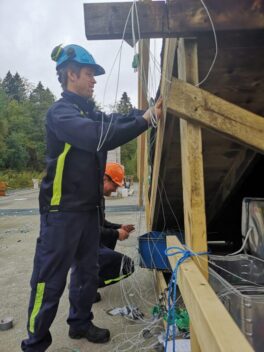
Researcher Reidar Stølen (left) and master’s student Joacim Skogseide install temperature measuring points at different positions on the roof before lighting the fire. Photo: RISE Fire Research
A 2021 study based on statistics from Germany, Italy, Australia and the United States showed that these countries had 29 fires a year for every GW of installed solar power. The fires occurred mainly due to faults in solar panel modules, DC switches, inverters and connectors, with connectors being the largest contributor.
Stølen believes the figures are transferable to Norwegian conditions.
The Government has set a target of installing 8 Terrawatt-hours of solar power by 2030.
“This is a 22-fold increase compared with the current situation, and could mean that we can expect 300 fires every year. It will be a huge advantage if we can reduce this estimate,” he says.
At the same time, the researcher stresses that the probability of a fire occurring is small for individual homeowners. He would not have any qualms about installing solar panel modules on his own house.
“I haven’t installed solar panel modules on my house yet, but I would like to. If you have a 10 kW system, statistics say that a fire will occur once every 3500 years. The risk of fire in each individual system is therefore quite small,” says Stølen.
This is FRIC
The Fire Research and Innovation Centre (FRIC) started in the spring of 2019. The goal is to increase knowledge in fire safety in order to make optimal decisions and develop better solutions that improve fire safety in buildings. FRIC is led by RISE Fire Research in Trondheim, with NTNU and SINTEF as research partners.
Reidar Stølen currently holds a 20 percent position at RISE Fire Research while doing his PhD at NTNU. Before starting his PhD, he worked full-time at RISE. His PhD position is funded by the Research Council of Norway through FRIC (which is managed by RISE).
References:
Reidar Stølen, Janne Siren Fjærestad, Ragni Fjellgaard Mikalsen: EBOB – Solcelleinstallasjonar på bygg. Eksperimentell studie av brannspreiing i holrom bak solcellemodular på skrå takflater. (EBOB – Solar cell installations on buildings. Experimental study of fire spread in cavities behind solar cell modules on pitched roof surfaces) (in Norwegian with English summary). Rise Report 2022:3
S. Kristensen, B. Jacobs, and G. Jomaas: Experimental Study of the Fire Dynamics in a Semi-enclosure Formed by Photovoltaic (PV) Installations on Flat Roof Constructions, Fire Technology, March 2022
S. Kristensen, F. B. M. Faudzi, and G. Jomaas: Experimental study of flame spread underneath photovoltaic (PV) modules, Fire Safety Journal, p. 103027, May 2020
F. Mohd Nizam Ong, M. A. Sadiq, M. S. Md Said, G. Jomaas, M. Z. Mohd Tohir, and J. S. Kristensen: Fault tree analysis of fires on rooftops with photovoltaic systems, Journal of Building Engineering, vol. 46, p. 13, Nov. 2021
